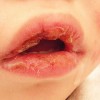Increased bloodstream infection rates in surgical patients associated with variation from recommended use and care following implementation of a needleless device
Abstract
OBJECTIVE: To determine if an apparent increase in bloodstream infections (BSIs) in patients with central venous catheters (CVCs) was associated with the implementation of a needleless access device.
DESIGN: Retrospective cohort study using a derived CVC-days factor for estimating appropriate denominator data.… Read more
